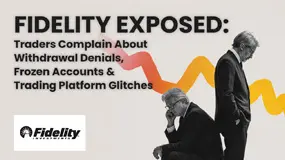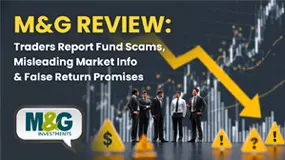简体中文
繁體中文
English
Pусский
日本語
ภาษาไทย
Tiếng Việt
Bahasa Indonesia
Español
हिन्दी
Filippiiniläinen
Français
Deutsch
Português
Türkçe
한국어
العربية
FX Global Code of Conduct: Building on Five Years of Progress
Abstract:Since its introduction five years ago, a lot has changed in the FX market. A common set of guidelines was issued to promote the integrity and effective functioning of the wholesale FX market

The BIS Foreign Exchange Working Group published the FX Global Code of Conduct on 25 May 2017 with the aim of providing a common set of guidelines to promote the integrity and effective functioning of the wholesale FX market.
Take Advantage of the Biggest Financial Event in London. This year we have expanded to new verticals in Online Trading, Fintech, Digital Assets, Blockchain, and Payments.
Since its introduction five years ago, a lot has changed in the FX market. The way we communicate, collaborate and the tools and technology we use have all been transformed.
The code itself has also evolved. The Global Foreign Exchange Committee (GFXC) updated 11 of the Code's 55 principles in July 2021 to strengthen its guidance on anonymous trading, algorithmic trading, transaction cost analysis, disclosures and settlement risk.
There is no doubt that the FX Global Code has improved practices across the industry while promoting transparency and spurring debate in key areas such as transaction cost analysis. But how can the GFXC build on achievements to date and maintain this momentum in years to come?
Promoting adoption among buy-side and corporates
One of the most important features of the FX Global Code is that is does not impose any legal or regulatory obligations on market participants. Instead, its a voluntary code of conduct designed to set out best practice and processes.
So, when it was first introduced, the big question was whether market participants would sign up and adhere to a voluntary code.
The BIS and many central banks took on the responsibility of driving adoption among key market participants. Some even required counterparties to sign the code and threatened to cut ties with those that didnt comply.
Combined with a general feeling that the industry needed to do better by standardising best practice and promoting transparency, this led to widespread adoption and there are now over 1,100 signatories on the global register.
But before we start patting ourselves on the back and saying job well done, its important to note that very few buy-side and corporate firms have signed up the FX Global Code.
In fact, of the 1,100+ signatories, there are only 80 asset managers, 30 corporates and 13 pension funds. In many cases, these types of firms arent aware of the code despite needing the code the most, given that many continually get a bad deal and struggle to achieve best execution and full transparency.
The GFXC recognised the lack of buy-side adoption as an issue back in 2018 and it set up a specific outreach working group to facilitate more adoption among these types of firms. At the time, only 60 buy-side firms had signed up the code. Fast forward four years and only 93 have signed up.
It‘s vital that we increase awareness of the code among buy-side firms and corporates as it exists for their protection. It enables them to scrutinise their liquidity providers and partners’ processes against best practice, ensuring they achieve best execution and get the transparency they deserve.
Renewing commitments to the code
In July 2021, the GFXC published the updated version of the code following an extensive process of consultation with the foreign exchange committees around the world and a public request for feedback in April of the same year.
Guy Debelle, GFXCs then chair, said: “The changes to the Code will ensure that the Code continues to promote the integrity of the market. Many of the changes are designed to bring about greater transparency in an increasingly complex market.”
The GFXC acknowledged that these changes would affect certain parts of the market more than others and said it anticipated that it would take around 12 months for practices to be brought into alignment with updated principles. And, this year, we have started to see some institutions, including the Bank of England, renew their commitment to the new code which is positive.
What I would like to see is the GFXC requiring all signatories to review and renew their commitments to the updated FX Global Code, whether theyre affected by the new changes or not.
Many signed up five years ago and so much has changed in that time with the advent of remote working, adoption of new technology and the great resignation which saw many change jobs.
A formal renewal process would help ensure that all signatories remain compliant and committed to the code and its principles.
Focusing on smaller market participants
The FX Global Code has been welcomed by the FX community and provided a forum for participants to debate a range of issues, from algorithmic trading to last look and TCA.
That said, it‘s important we don’t rest on our laurels and see 1,100+ signatories as enough. We need to focus on the smaller market participants (e.g. buy-side and corporates) as together they make up a significant portion of the market. These are the firms which benefit most from the best practice set out in the code and, as an industry, we need to make sure we bring them on this journey with us.
In summary, we believe the FX Global Code should be for the whole FX market, not just for the wholesale FX market. Theres still more to do to get there.

Disclaimer:
The views in this article only represent the author's personal views, and do not constitute investment advice on this platform. This platform does not guarantee the accuracy, completeness and timeliness of the information in the article, and will not be liable for any loss caused by the use of or reliance on the information in the article.
Read more

Fidelity Exposed: Traders Complain About Withdrawal Denials, Frozen Accounts & Platform Glitches
Does Fidelity Investments prevent you from accessing funds despite numerous assurances on your requests? Do you witness an account freeze by the US-based forex broker every time you request withdrawal access? Do you struggle with an unstable trading platform here? Is the slow Fidelity customer service making you face forced liquidation? These issues haunt traders, with many of them voicing their frustration on several broker review platforms such as WikiFX. In this Fidelity review article, we have shared quite a few complaints for you to look at. Read on!

Exposing The Trading Pit: Traders Blame the Broker for Unfair Withdrawal Denials & Account Blocks
Did you receive contradictory emails from The Trading Pit, with one approving payout and another rejecting it, citing trading rule violations? Did you purchase multiple trading accounts but receive a payout on only one of them? Did The Trading Pit prop firm refund you for the remaining accounts without clear reasoning? Did you face account bans despite using limited margins and keeping investment risks to a minimum? These are some raging complaints found under The Trading Pit review. We will share some of these complaints in this article. Take a look.

M&G Review: Traders Report Fund Scams, Misleading Market Info & False Return Promises
Applying for multiple withdrawals at M&G Investments but not getting it into your bank account? Do you see the uncredited withdrawal funds out of your forex trading account on the M&G login? Does the customer support service fail to address this trading issue? Does the misleading market information provided on this forex broker’s trading platform make you lose all your invested capital? Were you lured into investing under the promise of guaranteed forex returns? These issues have become highly common for traders at M&G Investments. In this M&G review article, we have echoed investor sentiments through their complaint screenshots. Take a look!

INZO Broker MT5 Review 2025: A Trader's Guide to Features, Fees and Risks
INZO is a foreign exchange (Forex) and Contracts for Difference (CFD) brokerage company that started working in 2021. The company is registered in Saint Vincent and the Grenadines and regulated offshore. It focuses on serving clients around the world by giving them access to popular trading platforms, especially MetaTrader 5 (MT5) and cTrader. The company offers different types of trading instruments, from currency pairs to cryptocurrencies. It aims to help both new and experienced traders. Read on to know more about it.
WikiFX Broker
Latest News
2 Malaysians Arrested in $1 Million Gold Scam Impersonating Singapore Officials
Moomoo Singapore Opens Investor Boutiques to Strengthen Community
OmegaPro Review: Traders Flood Comment Sections with Withdrawal Denials & Scam Complaints
An Unbiased Review of INZO Broker for Indian Traders: What You Must Know
BotBro’s “30% Return” Scheme Raises New Red Flags Amid Ongoing Fraud Allegations
The 5%ers Review: Is it a Scam or Legit? Find Out from These Trader Comments
WikiEXPO Dubai 2025 Concludes Successfully — Shaping a Transparent, Innovative Future
Admirals Cancels UAE License as Part of Global Restructuring
Forex Expert Recruitment Event – Sharing Insights, Building Rewards
Exness Broker Expands in South Africa with Cape Town Hub
Currency Calculator



